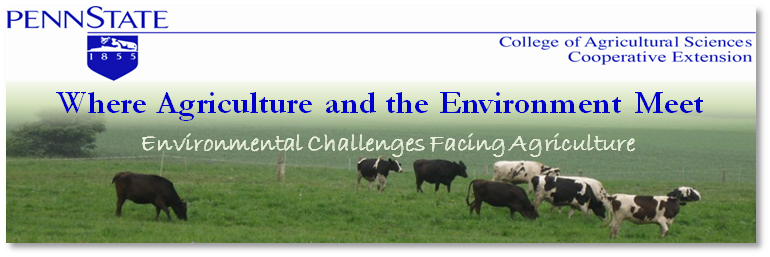A draft of the guidance strategy for federal agricultural lands in the Chesapeake Bay watershed (Guidance for Federal Land Management in the Chesapeake Bay Watershed) was released in March, and although the title implies that these suggestions are only relative to agriculture on federal lands the content implies otherwise. It is suggested in the first few paragraphs of this 246-page document that these suggestions should be taken into consideration by states and other agencies in the development of the local watershed implementation plans. There are twenty implementation measures outlined in this guidance, but the focus of this column will be on the three measures that would most directly impact grazers.
The one that has, and will continue to get, the most attention states: “Exclude livestock form streams and streambanks and provide alternative watering facilities and stream crossings to reduce nutrient inputs, streambank erosion, and sediment inputs and to improve animal health.” This push has been coming from the federal, state, and local level for some time and there will continue to be pressure on this issue. Research has shown that when cattle are fenced out of the streams there are significant reductions in fecal coliforms, total nitrogen, total phosphorus, and total solids in the streams. Also, from the cow standpoint, hoof health and udder health are generally better in cows that are not allowed to stand in water. This guidance does not specify a suggested buffer zone width, but even a simple poly wire along the bank can have benefits for water quality and animal health.
The other measure that relates directly to grazing operations states: “Minimize nutrient and soil loss from pasture land by maintaining uniform livestock distribution, keeping livestock away from riparian areas, and managing stocking rates and vegetation to prevent pollutant losses through erosion and runoff.” Many well managed grazing operations are already implementing practices that would address these issues as too high a stocking density without proper rotation will decrease pasture quality and intake. This measure also suggests that the streambank buffers, mentioned previously, should not be grazed except under specific circumstances.
The last measure directly addressing grazing operation states: “Manage runoff from livestock production areas under grazing and pasture to minimize off-farm transport of nutrients and sediment.” With properly managed pastures the vegetation should reduce and prevent a great deal of runoff, but high traffic areas and compacted soils can facilitate runoff from pasture areas. It is unclear how sacrifice lots/paddocks fit into these regulations, but the goal of all of these measures is to eliminate as much as possible all runoff from agricultural operations and that includes cultivated fields, barnyards, pastures, and sacrifice lots.
It is unclear how these specific measures will play out in Pennsylvania, but it is clear that more regulations are coming and they will impact everyone.
Pasture walks scheduled: Below are three pasture walks I will be involved with and presenting some of this information and how these new Chesapeake Bay regulations might impact you.
June 29th Amos Ebersol at 590 Red Hill Rd, Narvon, PA. A conventional jersey operation with a thriving direct marketing business. Karl Dallefield of Midwestern Bio-Ag will be speaking. Lunch will be provided.
June 30th Roman Stoltzfus at 1143 Gap Rd, Kinzers, PA. A highly diversified organic dairy grazing operation. Karl Dallefield of Midwestern Bio-Ag will be speaking. Lunch will be provided.
July 21st Stephen T. Stoltzfus at 5268 Amish Rd, Kinzers, PA. An organic dairy operation. Dr. Gregory Martin of Penn State Extension will be speaking on fly control. Lunch will be sponsored by Beitzel’s Spraying.

